Cuanlongyan Tablet in Luliang County, Qujing
Overview
The full name of the stele is “The Stele of Cuan Shijun, Marquis of Qiongd County, Protector of the Southern Barbarians, and General Longxiang of Song Dynasty”. This stele was inscribed during the Southern Song Dynasty in the second year of the Daming era (AD 458), and the text was written by Cuan Daoqing (爨道庆). The exact date of its discovery is unknown, but it has been documented since the Yuan and Ming dynasties and has circulated in rubbings. The stele is currently located in the Douge Temple of Xueguan Fortress, about 3 kilometers west of the colorful sand forest in Luliang County (陆良县), Yunnan Province (云南省). The stele measures 3.38 meters in height, 1.35 meters in width at the top, and 1.46 meters at the bottom.
The upper part of the stele features relief sculptures of a Qinglong (青龙), Baihu (白虎), and Zhuque (朱雀), with a hole below that measures 0.17 meters in diameter. On either side of the hole are sun and moon patterns, with a bird (三足乌) carved in the sun and a toad in the moon, each with a diameter of 0.16 meters.
The text is inscribed on both sides of the stele. The front side has 24 lines, each containing 45 characters. In addition to detailing the identity of the stele’s subject, it also chronicles the origin of the Cuan family, their lineage, the process of their migration from Henan (河南) to Yunnan, and the accomplishments of the stele’s subject. The reverse side contains three columns of text: the upper has 15 lines, the middle has 17 lines, and the lower has 16 lines, with varying character counts from 3 to 10 per line, documenting the officials and colleagues who erected the stele. The end of the stele features inscriptions from three individuals: Yuan Quan, Qiu Jun’en, and Yang Pei from the Qing dynasty. The total text on both sides exceeds 1,000 characters, written primarily in standard script but still showing elements of clerical script. The characters are bold and vigorous, showcasing an elegant style with variations in form.
Stele Inscription Content
Heading
“The Stele of Cuan Shijun, Marquis of Qiongd County, Protector of the Southern Barbarians, and General Longxiang of Song Dynasty”.
Main Text
The gentleman’s name is Lóngyán (龙颜), styled Shìdé (仕德), from Tónglè County (同乐县), Jiànníng (建宁). His ancestors were originally of the high lineage of Zhuānxù (颛顼), a talented descendant of Zhùrón (祝融). They established deep roots without stagnation.
In the flourishing days of the Xià dynasty, he displayed the five teachings and gained merit in nine regions. His pure virtue was known throughout the ages, and his benevolence spread for countless generations. Thus, he shone brightly in the Western Mountains, commanding respect in Yǐng and Chǔ, and his deeds were celebrated in the Spring and Autumn period, echoing through the generations.
In the latter Han period, he was elected in the tenth year of Yìxī (义熙) as a talented scholar and served in the central government; he contributed to the stability of the Middle Kingdom.
Later, during the end of the Han dynasty, the Cuàn clan settled in Yunnan, marrying into noble families, thus gaining prominence. His ancestor Sù (肃) served as the Minister of State, and his father served as a military governor and was posthumously honored as the Marquis of Qióngdū.
Lóngyán was the great-grandson of a minister, possessing a noble demeanor and virtuous character. He was known for his kindness and was always respected. He was selected as a scholar in the tenth year of Yìxī and served in various capacities with clear achievements.
He was later appointed as the General of Dragon Rising and acted as the Governor of Jiànníng, showing loyalty and kindness. Lóngyán passed away at the age of 61. After his death, his achievements were commemorated in this stele.
Main Text in Chinese
君讳龙颜,字仕德,建宁同乐县人。其先世本高阳颛顼之玄胄,才子祝融之渺胤也。清源流而不滞,深根固而不倾。
君的名字是龙颜,字仕德,来自建宁同乐县。他的先祖是高阳的玄胄,才子祝融的后裔。源流清晰而不受阻滞,根基深厚而不倾斜。
夏后之盛,敷陈五教,勋隆九土。纯化布于千古,仁功播于万祀。故乃耀辉西岳,霸王郢楚,子文铭德于春秋,斑朗绍纵于季叶。
在夏朝的盛世,弘扬五教,功勋遍布九土。纯德流传千古,仁惠传承万代。因此,西岳辉映,霸主在郢楚,子文铭记春秋,斑朗在季叶之间。
阳九运否,蝉蜕河东,逍遥中原。班彪删定《汉记》,班固述修《道训》。
阳九的命运不佳,蝉脱落于河东,自在于中原。班彪编纂《汉记》,班固续写《道训》。
爰暨汉末,采邑于爨,因氏族焉。姻娅媾于公族,振缨蕃乎王室。
在汉末时期,采邑于爨,因此形成了家族关系。婚姻联姻于贵族,振兴王室。
乃祖肃,魏尚书仆射,河南尹,位均九例,舒翮中朝。迁运庸蜀,流薄南入,树安九世,千柯繁茂,万叶云兴;乡望标于四姓,邈冠显于上京。
曾祖肃,魏国的尚书仆射,河南尹,位列九品,舒展翅膀于中央朝廷。迁至庸蜀,南迁流薄,树立了九世之安,千株繁茂,万叶云集;家乡在四姓中显赫,远在上京之中。
瑛豪继体,于兹而美。祖,晋宁、建宁二郡太守,龙骧将军,宁州刺史。考龙骧辅国将军八郡监军,晋宁、建宁二郡太守,追谥宁州刺史、邛都县侯。
瑛豪继承体制,因而美好。祖父是晋宁和建宁两郡的太守,龙骧将军,宁州刺史。父亲是龙骧辅国将军,监军八郡的太守,追封宁州刺史、邛都县侯。
金紫累迹,朱黻充庭。君承尚书之玄孙,监军之令子也。
金紫的历史辉煌,朱黻装饰庭院。君是尚书的玄孙,监军的子孙。
容貌玮于时伦,贞操超于门友。温良冲挹,在家必闻。本州礼命主簿不就,三辟别驾从事史,正式当朝,靖拱端右。
君的容貌在当时是美丽的,品德超出邻居。温良和气,家中名声显赫。地方官的礼命主簿不就,三次被荐为别驾,成为当朝的重要官员。
仁笃显于朝野,清名扇于遐迩。举义熙十年秀才,除郎中、相国西镇,迁南蛮府行参军,除试守建宁太守。
仁爱在朝野之间显著,清名在远近传播。被推举为义熙十年的秀才,担任郎中,后迁任南蛮府行参军,试守建宁太守。
剖符本邦,衣锦昼游。民歌其德,士咏其风。于是贯伍乡朝、本州司马、长史。而君素怀慷慨,志存远御,万国归阙,除散骑侍郎。
治理本邦,衣锦还乡。民众歌颂其德行,士人咏叹其风采。于是担任伍乡朝、本州的司马、长史。而君素有慷慨之怀,志向远大,万国归阙,担任散骑侍郎。
进无烋容,退无愠色,忠诚简于帝心,芳风宣于天邑。
前进时容光焕发,退后时面无愠色,忠诚深得帝心,芳香之风传播于天邑。
除龙骧将军,试守晋宁太守,轺车钺斧,金章紫绶,綮戟幢盖,袭封邛都县侯。
被任命为龙骧将军,试守晋宁太守,轺车权杖,金章紫绶,綮戟幢盖,袭封邛都县侯。
岁在壬申,百六遘衅,州土扰乱,东西二境,凶竖狼暴,缅成寇场。
在壬申年,发生了多次叛乱,州土动荡不安,东西两地狼狈不堪,成为了盗匪的滋生地。
君收合精锐五千之众,身伉矢石,扑碎千计,肃清边嵎。君南中磐石,人情归望,迁本号龙骧将军、护镇蛮校尉、宁州刺史、邛都县候。
君召集精锐五千,身披铠甲,勇猛奋战,清扫边疆。君在南中如磐石般坚定,人心向望,转任龙骧将军、护镇蛮校尉、宁州刺史、邛都县侯。
荆襟楚角,海宇云嶙;东隅已逝,桑榆非晚。得君相则小三求,惟公三变,为百年而立。
荆州襟怀,楚地角落,海宇苍茫;东隅已逝,桑榆尚早。得君相辅,欲求更小的利益,为百年之计而立。
Background
The Cuanlongyan Tablet (爨龙颜碑) was established in the second year of the Liu Song Dynasty (刘宋, Liú Sòng) (A.D. 458) by the prominent Cuan family (爨氏, Cuàn shì) in Tongle County (同乐县, Tónglè xiàn), now Luliang County (陆良县, Lùliáng xiàn), Qujing (曲靖, Qūjìng). The inscription chronicles the achievements of Cuan Longyan (爨龙颜, Cuàn Lóngyán), whose ancestors served as governors and inspectors during the Jin (晋, Jìn) and Song (宋, Sòng) Dynasties. This indicates that when the Eastern Jin Dynasty (东晋, Dōng Jìn) lost direct control over Ningzhou (宁州, Níngzhōu), the Cuan family governed the region under the title of inspector. Cuan Longyan passed the imperial examination in the tenth year of the Yixi era (义熙, Yìxī) (A.D. 414) and served in the central court; he remained loyal to the Liu Song Dynasty, as the inscription states, “Loyalty is simple in the emperor’s heart, fragrant winds announce in the heavenly city.” This reflects the diplomatic policy towards the Cuan family, allowing peaceful coexistence and enabling them to support the imperial authority in the southwest.
In A.D. 432, the Zhao Guang Rebellion (赵广起义, Zhào Guǎng qǐyì) broke out in Yizhou (益州, Yìzhōu), prompting various ethnic groups in the south to respond. Amid this turmoil, Cuan Longyan gathered a force of 5,000, crushing the rebellion. For his achievements, he received significant rewards and was later appointed as a military official to guard the southwestern frontier. After securing local governance, he reformed the administration, ensuring both the Cuan family’s influence and loyalty to the central power. After Cuan Longyan’s death, his deeds were memorialized on the tablet.
Artistic Appreciation
Calligraphy Style
The inscription exhibits powerful, dynamic brushwork with significant variation in strokes. Although rendered in standard script (楷书, kǎi shū), it retains elements of clerical script (隶书, lì shū). The tablet features pronounced reverse strokes, center-driven lines, and hidden ends, contributing to its unique character. Some long horizontal strokes exhibit a lively, floating quality, reflecting clerical script influences. The style is reminiscent of Northern Dynasty inscriptions and is often compared to renowned works from the Northern Wei Dynasty (北魏, Běi Wèi). The strokes are robust, evoking a sense of strength, while the overall composition maintains an elegant balance between heaviness and grace.
Structure
The Cuanlongyan Tablet adopts a flat and spacious structure, with a natural and simple demeanor, balancing shapes and lengths to create an engaging aesthetic. The composition emphasizes interest and natural beauty while maintaining a diverse structure. Variations in character size and stroke length contribute to a unique charm. Repetitive characters, such as “不” (bu), “军” (jun), “宁” (ning), and “龙” (long), display distinct characteristics in both structure and execution.
Flexibility and Innovation
The tablet’s characters display a blend of traditional and innovative styles. Sun Guoting (孙过庭, Sūn Guòtíng) noted that genuine script conveys essence through strokes. This perspective reveals that the tablet balances formality with a flexible spirit. The writer skillfully arranged strokes, employing various styles, enhancing the visual appeal and conveying depth and intricacy.
Layout
The overall layout of the Cuanlongyan Tablet is well-balanced, combining dense and sparse elements. It transcends the principle of uniformity, blending distinct styles within a structured composition, resulting in an aesthetically pleasing experience.
Notable Comments
Kang Youwei (康有为, Kāng Yǒuwéi), a revolutionary and thinker of the Qing Dynasty, remarked on the tablet’s aesthetic qualities, highlighting its balance of beauty and intricacy. Yang Shoujing (杨守敬, Yáng Shǒujìng), a calligrapher, appreciated the variations within its clerical style, while Ruan Yuan (阮元, Ruǎn Yuán) described it as a unique piece in Yunnan (云南, Yúnnán), showcasing the mastery of Han (汉, Hàn) and Jin (晋, Jìn) Dynasty calligraphy. Guifu (桂馥, Guì Fù), a scholar, noted the delightful simplicity of its calligraphy.
Historical Legacy
The Cuanlongyan Tablet gained attention during the late Qing Dynasty due to Ruan Yuan’s endorsement. Its robust calligraphy and historical significance make it a valuable resource for studying Chinese calligraphy. Besides its artistic merits, it serves as evidence of the Cuan family’s prominence and the relationship between local and central governance, reflecting the integration of Han culture and local ethnic influences, leading to the emergence of Cuan culture.
In 1961, the Cuanlongyan Tablet was designated a national key cultural relic. Restoration efforts were undertaken in 1962, with the tablet being relocated to a nearby hall in 1986 due to severe weathering.
How to Get There
The Cuanlongyan Tablet is located in Luliang County (陆良县, Lùliáng xiàn), Qujing (曲靖, Qūjìng), Yunnan Province (云南省, Yúnnán shěng). Visitors can reach the site by taking a bus or driving from Qujing City (曲靖市, Qūjìng shì), which is well-connected by major highways. Public transportation options are available from Kunming (昆明, Kūnmíng) to Qujing.
Travel Tips
- Visit during spring or autumn for pleasant weather.
- Take time to explore the surrounding area for additional historical sites.
- Consider hiring a local guide to enhance your understanding of the cultural context.
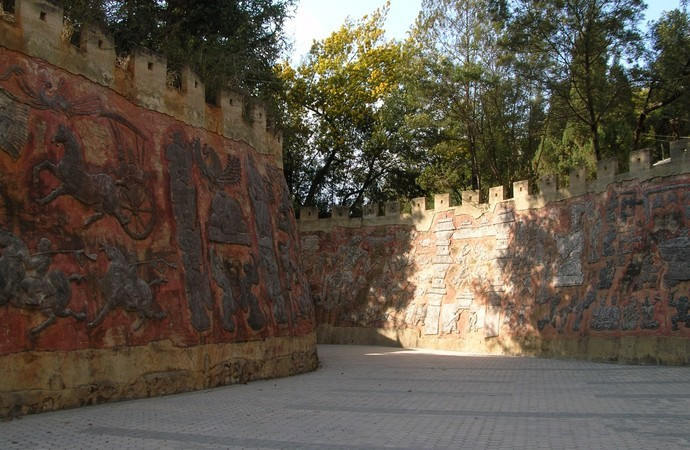
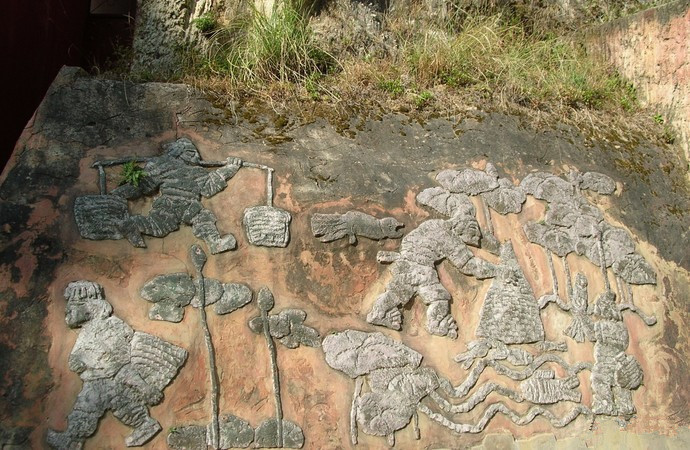
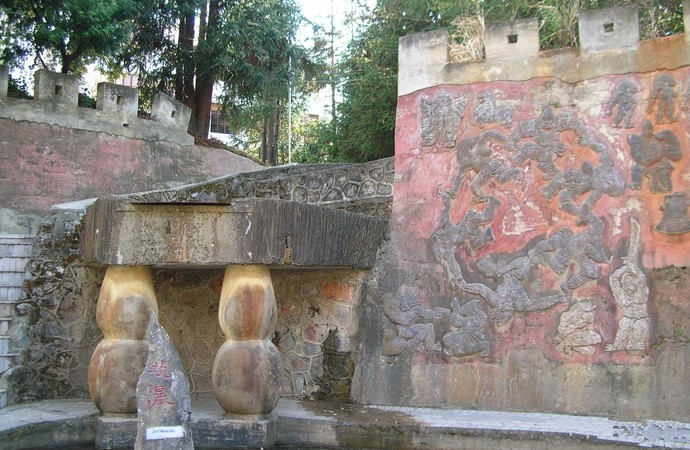
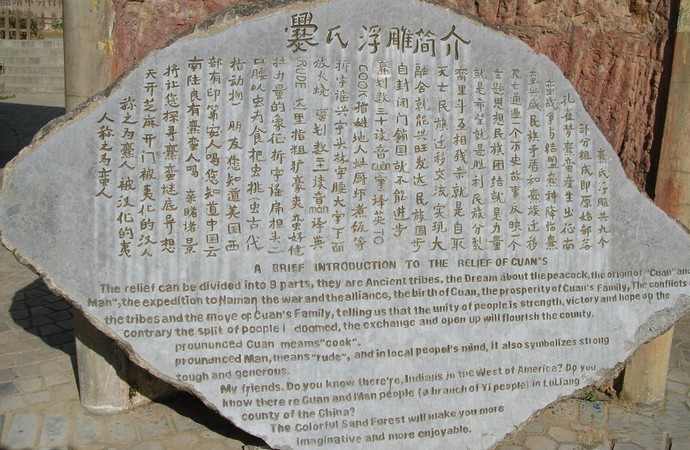

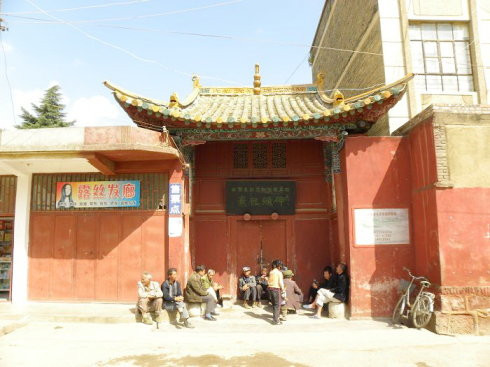
Location:
















